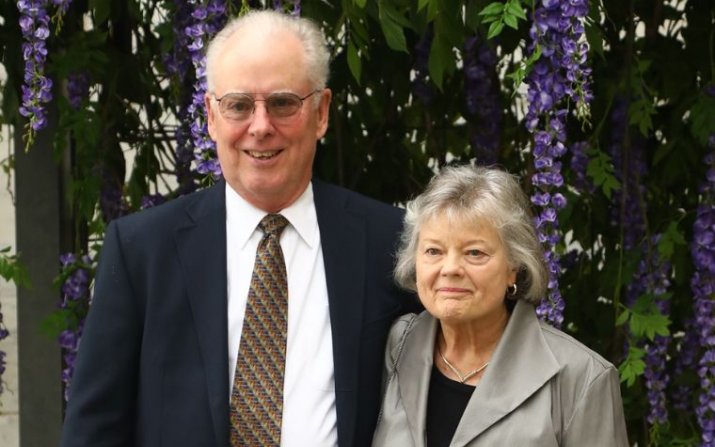Focus on interdisciplinary research inspires $1 million commitment to science and engineering building

An early interest in engineering drew Tom Seitz (CIT ’70) to the campus of what is now Case Western Reserve University. Here, he began to learn the importance of collaboration, innovation and empowering teams to work together toward a common goal.
It was the interdisciplinary skills he acquired—along with significant undergraduate research opportunities—that propelled Seitz into a long and successful career at Sherwin-Williams, where he eventually retired as senior vice president responsible for global innovation and operational excellence.
Seeing an opportunity to similarly inspire today’s students while advancing an ever-growing array of collaborative research initiatives, Seitz and his wife, Nancy, have committed $1 million to the university’s 200,000-square-foot Interdisciplinary Science and Engineering Building (ISEB) project. A century bond the university issued last year will allow the gift to be fully matched, increasing the couple’s impact to $2 million.
“This commitment from Tom and Nancy Seitz reflects their recognition of the value of interdisciplinary collaboration,” President Eric W. Kaler said, “as well as the importance of offering a more welcoming presence to our community. We deeply appreciate their support.”
Citing the university’s commitment to interdisciplinary research as a motivating factor, the couple previously endowed a professorship in advanced materials and energy—a position held by Ica Manas-Zloczower.
“Just as we needed a professor of material sciences, combining chemistry and physics, math, computers and mechanical engineering, we need a building that allows us to integrate all of the university’s disciplines in one place,” the couple explained.
Seitz believes the building’s focus on collaborative research will provide a wide range of students, including emerging engineers, with the diverse set of practical skills they’ll need to compete—much the way his experience on the Case Quad informed his own career path.
“I think I was like most potential engineers back in those days,” he recalled. “I disassembled my father’s lawnmower when he wasn’t looking, got it put back together—mostly—and later on took the engine off and made a go-kart out of it.”
However, soon after arriving on campus, Seitz realized engineering included much more than mechanics. The research skills he learned, and the facilities where he learned them, were integral to his success. But while times have changed and the curriculum has become far more interdisciplinary, he noted, research spaces have stayed the same.
“Despite best efforts, renovating the interiors of these buildings to make them functional with the current needs is very tough,” Seitz said. “You’re always playing catch up and behind the power curve. The ISEB is a chance for us to take a giant step forward and get out in front of the process with a world-class facility that attracts world-class faculty and creates fabulous opportunities for undergrad research as well.”
With connections to campus dating back to the turn of the 20th century—starting with the graduation of Nancy’s great-grandfather, Gurley Sloan Phelps (CSAS 1901) and continuing through the education of Tom’s cousin and mentor, Glen Dorrow (CIT ‘60), the couple views ISEB as the next step in their family’s role in helping advance Case Western Reserve’s growth and transformation.
Still, beyond the research and educational attributes, Seitz also looks forward to the aesthetic draw the new facility will have on the historic campus.
“The ISEB will be exciting for the university and the environment of the Case Quad,” he said. “It will be the first thing you see when you come across Euclid [Avenue] and should help pull together people from all parts of campus.”
